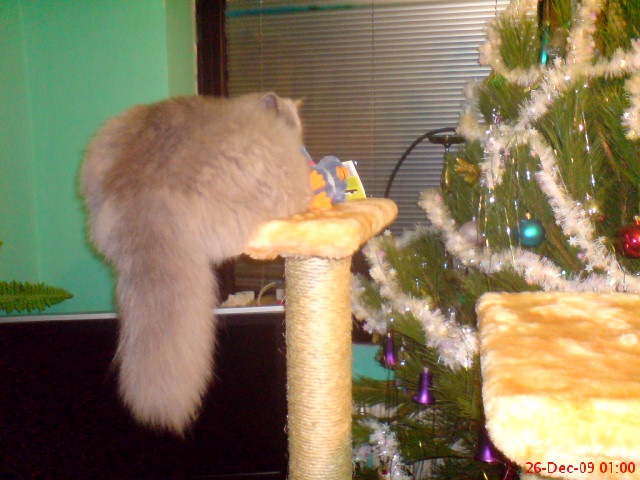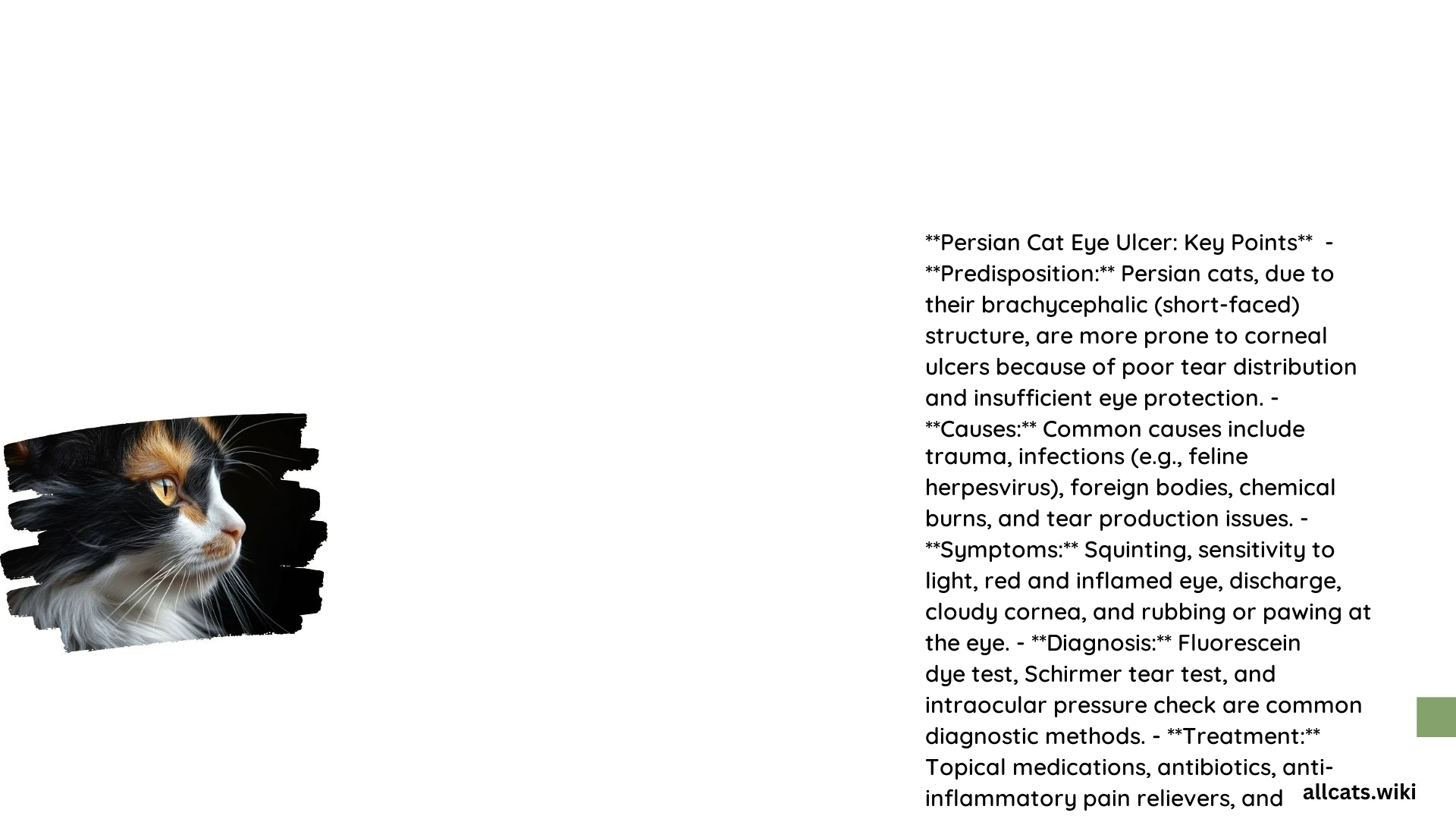Persian cats, known for their distinctive flat faces, are prone to various eye-related issues, including corneal ulcers. These painful conditions can lead to serious complications if left untreated. In this comprehensive guide, we’ll explore the common causes, symptoms, and effective treatment options for Persian cat eye ulcers.
What Causes Corneal Ulcers in Persian Cats?

Corneal ulcers in Persian cats can develop due to several factors, including:
- Brachycephalic Conformation: The flat-faced structure of Persian cats can cause their eyes to protrude, making them more susceptible to injuries and irritation.
- Dry Eye (Keratoconjunctivitis Sicca): Persian cats are prone to decreased tear production, leading to dry eyes and increased risk of corneal ulcers.
- Trauma: Scratches, foreign objects, or other physical injuries to the eye can cause corneal ulcers.
- Infections: Bacterial, viral, or fungal infections can also lead to the development of corneal ulcers.
- Underlying Health Conditions: Conditions like feline herpesvirus, immune system disorders, or diabetes can increase the risk of corneal ulcers.
How to Identify the Symptoms of Corneal Ulcers in Persian Cats?

The most common symptoms of corneal ulcers in Persian cats include:
- Excessive tearing
- Squinting or keeping the eye closed
- Redness and inflammation of the eye
- Colored discharge from the eye
- Cloudiness or opacity of the cornea
- Behavioral changes, such as rubbing or pawing at the affected eye
How Are Corneal Ulcers in Persian Cats Diagnosed?
Veterinarians typically use the following diagnostic methods to identify corneal ulcers in Persian cats:
- Fluorescein Stain: A special fluorescent dye is applied to the eye, which helps the veterinarian detect any ulcers or abrasions on the cornea.
- Tear Production Test: This test measures the cat’s tear production, which can be reduced in breeds prone to dry eye.
- Eye Discharge Tests: Samples of the eye discharge may be analyzed to identify any underlying bacterial or viral infections.
What Are the Treatment Options for Corneal Ulcers in Persian Cats?
The treatment for corneal ulcers in Persian cats typically involves a combination of the following:
- Topical Medications:
- Antibiotic eye drops or ointments to treat or prevent bacterial infections
- Antiviral medications if the ulcer is caused by a viral infection
-
Anti-inflammatory medications to reduce pain and inflammation
-
Pain Relief: Medications may be prescribed to alleviate the cat’s discomfort.
- Elizabethan Collar: This collar helps prevent the cat from rubbing or scratching the affected eye.
- Supportive Therapies: Lubricating eye drops may be used to keep the eye moist during the healing process.
In more severe or chronic cases, surgical intervention may be necessary, such as:
- Removal of dead tissue or repair of the cornea
- Referral to a veterinary ophthalmologist for complex cases
How Long Does It Take for a Corneal Ulcer in a Persian Cat to Heal?
The healing process for a corneal ulcer in a Persian cat can vary depending on several factors:
- Size and Depth of the Ulcer: Superficial ulcers may heal within a week or two, while deeper ulcers may take several weeks to months.
- Underlying Cause: The presence of an infection or other underlying condition can affect the healing timeline.
- Compliance with Treatment: Proper administration of medications and regular follow-up appointments are crucial for optimal healing.
It’s important to note that while some superficial corneal ulcers may have the capacity for self-healing, it’s essential to seek veterinary care to ensure proper treatment and prevent complications.
What Is the Follow-Up Care for Persian Cats with Corneal Ulcers?
After the initial treatment, the follow-up care for Persian cats with corneal ulcers includes:
- Medication Administration: Ensuring all prescribed medications are given as directed.
- Buster Collar: Preventing the cat from further damaging the eye.
- Regular Check-Ups: Follow-up appointments with the veterinarian to monitor the healing progress.
How Much Does It Cost to Treat a Corneal Ulcer in a Persian Cat?
The cost of treating a corneal ulcer in a Persian cat can vary widely, depending on the complexity of the case:
- Simple Ulcers: May require medication and a few vet checks, costing around $200-$500.
- Complex Cases: May involve surgery or referral to a specialist, potentially costing $1,000-$1,500 or more.
It’s important to work closely with your veterinarian to understand the specific treatment plan and associated costs for your Persian cat’s corneal ulcer.
References:
1. Pet Health Network: [Corneal Ulceration in Cats – Irritated Eyes]
2. Beyond Pets: [Corneal Ulcers In Cats: Causes, Symptoms, And Treatment]
3. Wag Walking: [Corneal Ulcers in Cats – Symptoms, Causes, Diagnosis, Treatment]
